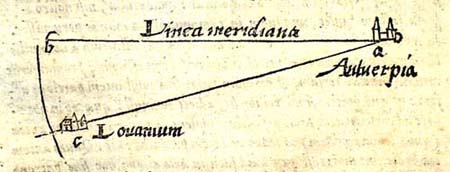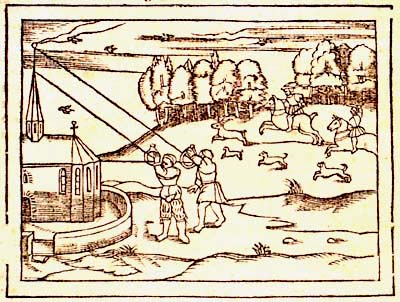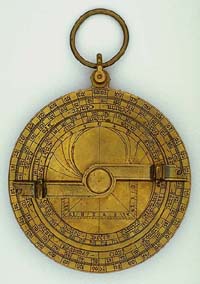|
Triangulation and
Measuring Heights at a Distance
Triangulation is a method
of determining both horizontal and vertical linear dimension
at a distance and was an innovation of the 16th century. It is
described in detail in Cosmographia. |
 |
|
Apianus has several illustrations
of people employing this method to measure the heights of towers
at a distance. The shadow square on the back of the astrolabe permitted
height measurements to be easily made, if one could first determine
his distance from the tower or the length of the tower's shadow.
The shadow square provided another means of measuring angles,
not in degrees but in ratios. The frequent appearance of shadow
squares on 16th century instruments indicates that contemporary
users were more familiar with ratios than with angles. |
 |
|
One instrument which was used
to measure heights at a distance was the astrolabe. In use, it
was held by the ring at the top. The back of this astrolabe has
a sight called the alidade; outer rings divided in degrees; and
a shadow square in the lower half of the inner circle.
Above the shadow square are unequal
hours, used to tell
time. |
 |
|
|





